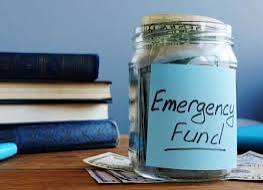Building an Emergency Fund: Your Financial Safety Net

In the unpredictable journey of life, financial stability is a cornerstone of peace of mind. One of the most vital tools to safeguard your financial health is an emergency fund. This fund acts as a safety net, providing a buffer against unexpected expenses that can otherwise derail your financial progress.
What is an Emergency Fund?
“Beat the Pressure: A Comprehensive Guide to Lowering Blood Pressure Naturally.”
Buy book from Gumroad or Paystack
An emergency fund is a dedicated stash of money set aside specifically for unforeseen expenses such as medical emergencies, sudden job loss, urgent home repairs, or unexpected travel. Unlike savings for vacations or major purchases, this fund is reserved strictly for genuine emergencies.
Why is an Emergency Fund Important?
- Financial Security: It offers immediate access to cash during tough times without the need to rely on high-interest credit cards or loans.
- Reduces Stress: Knowing you have a cushion reduces anxiety around unexpected costs.
- Prevents Debt: Helps avoid borrowing money or dipping into retirement or investment accounts.
- Provides Flexibility: Grants you time to make thoughtful decisions rather than rushed financial moves under pressure.
How Much Should You Save?
Financial experts generally recommend saving three to six months’ worth of essential living expenses. This includes rent or mortgage, utilities, groceries, insurance, transportation, and minimum debt payments. The exact amount depends on your job stability, income sources, and personal circumstances.
Steps to Build Your Emergency Fund
- Assess Your Expenses: Calculate your monthly essential costs to determine your target fund size.
- Set a Realistic Goal: If six months is daunting, start with one month and gradually increase.
- Create a Budget: Identify areas to cut back and allocate that money toward your emergency fund.
- Automate Savings: Set up automatic transfers to a separate, easily accessible savings account.
- Prioritize Your Fund: Treat your emergency savings as a non-negotiable monthly expense.
- Avoid Using It for Non-Emergencies: Discipline is key to maintaining the fund’s purpose.
Where to Keep Your Emergency Fund?
Choose a liquid, low-risk account such as a high-yield savings account or money market account. The fund should be accessible quickly without penalties, but separate from your everyday spending money to avoid temptation.
Replenishing Your Fund
If you use your emergency fund, make it a priority to replenish it as soon as possible. This ensures you remain protected against future surprises.
Conclusion
An emergency fund is more than just money in the bank; it’s a cornerstone of your financial resilience. By proactively building and maintaining this fund, you empower yourself to face life’s uncertainties with confidence and security. Start today – your future self will thank you.
💔 “She said she loved me. And for fifty-two years, I believed her.” 💔
Buy The Book "The Longest Lie: A Husband’s Journey Through Love, Betrayal, and Redemption" From Gumroad





